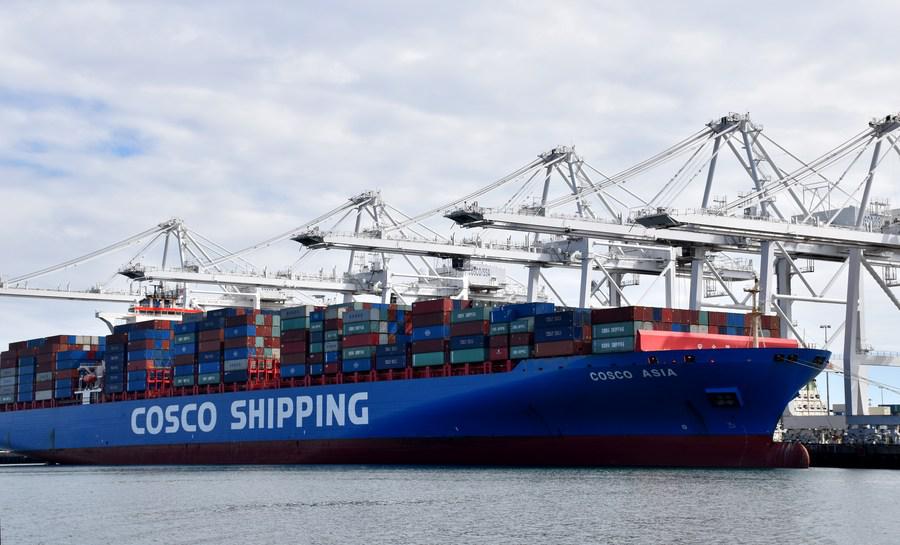Commentary: How to make China-U.S. Alaska dialogue effective


For the long-term health and stability of what many deem as the world's most important bilateral relationship, both sides must seize the moment in Anchorage and make the dialogue effective communication.
BEIJING, March 18 (Xinhua) -- Senior Chinese and U.S. officials will kick-start in Alaska's largest city of Anchorage a two-day high-level strategic dialogue on Thursday.
Recent history has shown that when the two countries engage in effective communication, their relationship can move forward smoothly and cooperation can be fruitful.
The coming sit-down marks the first face-to-face talks between high-level officials of the two sides after the new U.S. administration took office. It also follows the first telephone conversation between Chinese President Xi Jinping and his U.S. counterpart, Joe Biden, after the American leader assumed office in January.
For the long-term health and stability of what many deem as the world's most important bilateral relationship, both sides must seize the moment in Anchorage and make the dialogue effective communication.

A man walks on the street in Anchorage, Alaska, the United States, March 17, 2021. (Xinhua/Wu Xiaoling)
First, the two sides need to show good faith. Progress is only possible when China and the United States share a willingness to engage in constructive dialogue.
Regrettably, the United States, along with some of its regional allies, has made noise in the Asia-Pacific ahead of the talks.
Washington needs to realize that forming small cliques targeting China will only deepen distrust between the two countries, exacerbate the current difficulties in China-U.S. relations, and raise doubts of its sincerity to engage with Beijing.
Second, the two sides should treat each other as equals. No country has the right to dominate global affairs, control the destiny of others, or keep advantages in development all to itself.
China has made clear that it will state its positions and concerns face to face with the U.S. side in the dialogue. If there is any issue Washington wants to resolve with Beijing, it can bring it to the table directly. Little stunts outside the meeting room are both unproductive and unnecessary.
Also, both should respect and properly manage the differences inherent in their political systems and chosen development paths.

Containers of China COSCO Shipping Corporation Limited are seen at the Port of Long Beach in Los Angeles County, the United States, Feb. 27, 2019. (Xinhua/Li Ying)
Third, the two countries must learn to accommodate each other's core interests. Beijing has made it abundantly clear that on issues concerning China's sovereignty, territorial integrity and national unity, there is no room for compromise.
China hawks in Washington repeatedly challenged Beijing's red lines and willfully interfered in China's internal affairs over the past four years. The results have been destructive. The two now face the most difficult period in relations since they normalized diplomatic ties.
If the U.S. side believes that it can somehow get China to make concessions on its core interests at the coming dialogue, it is simply delusional.
Anchorage is located roughly midway between Beijing and Washington. Indeed, meeting each other halfway is what the two countries need following four years of deteriorating bilateral ties.
Fifty years ago, Chinese and American leaders demonstrated their political acumen by tapping the pingpong diplomacy and broke the ice in bilateral ties by overcoming seemingly unimaginable difficulties and divisions.
To take the China-U.S. relationship back on track, the Anchorage dialogue should be a new start. The two sides need to bring forth immense political wisdom and courage to ensure that the dialogue can set in motion future productive and effective engagement between China and the United States beyond Alaska.
Photos
Related Stories
- Chinese delegation arrives in Anchorage for U.S talks
- China will not compromise on core interests at Anchorage dialogue: ambassador
- Using China as bogeyman to help unite America, revive NATO is fool: The Nation
- Ambassador Cui Tiankai Takes an Interview in Anchorage (English Translation of the Transcript)
- China urges U.S., Japan to stop interfering in China's internal affairs
- Commentary: U.S. sanctions send wrong message before high-level dialogue with China
- UN chief hopes for positive outcome of China-US high-level meeting: spokesman
- American economist debunks “China threat” theory, calls for closer China-US cooperation
- Majority of U.S. tech workers agree on more cooperation with Chinese firms: survey
- Commentary: Dynamic Asia-Pacific demands constructive U.S. role
Copyright © 2021 People's Daily Online. All Rights Reserved.










